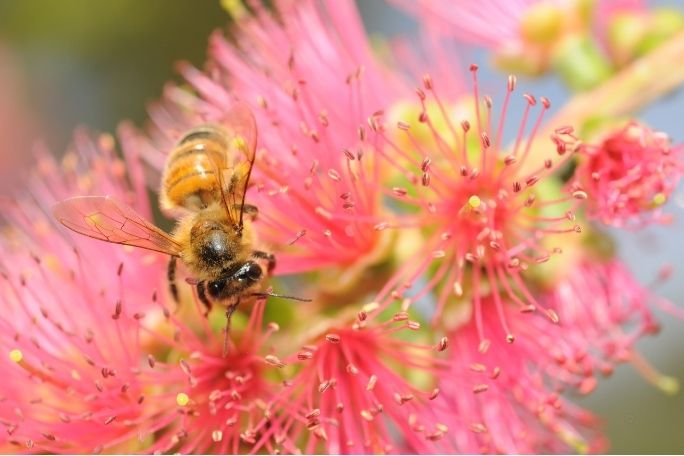Lesson summary
In this activity children investigate the features of bees and how bees use these features. Younger children begin by sharing what they already know about bees and then look at and discuss flashcards of bees. Children can then make bee finger puppets using a template. Older children begin by looking at flashcards of bees and then participate in a game where they take on the roles of bees collecting pollen to bring back to the hive. This activity is designed to help connect children to the wonders of the natural world through sensory and play-based learning.
Activity Intention:
- This activity is designed to help connect children to the wonders of the natural world through sensory and play-based learning.
Lesson guides and printables
Lesson details
Curriculum mapping
Learning Outcome 2:
Children are connected with and contribute to their world
2.4 Children become socially responsible and show respect for the environment
Learning Outcome 4:
- Children are confident and involved learners
- 4.1 Children develop dispositions for learning such as curiosity, cooperation, confidence, creativity, commitment, enthusiasm, persistence, imagination and reflexivity
- 4.2 Children develop a range of skills and processes such as problem solving, inquiry, experimentation, hypothesising, researching and investigating
- 4.4 Children resource their own learning through connecting with people, place, technologies and natural and processed materials
Learning Outcome 5:
- Children are effective communicators
- 5.1 Children interact verbally and non-verbally with others for a range of purposes
Resources required
Ages 0 – 2:
- Print the Parts Of A Bee Flashcards and stick the provocations to the back of each corresponding image.
- Print the Bee Finger Puppet Template and drawing/colouring materials.
Ages 3 to 5:
- Print the Parts Of A Bee Flashcards and stick the provocations to the back of each corresponding image.
- For the game (Step 2) you will need:
- A quantity of small plastic balls (these are the pollen)
- Cushions (these are the flowers)
- Two or three buckets to collect the balls (pollen) in
- A defined area large enough for two children to fit inside (e.g. rearrange tables and chairs to make a space – this will be your hive).
Additional info
This lesson has been created in partnership with ACT for Bees. ACT for Bees is a not-for-profit organisation taking action to preserve these essential pollinators, ensuring a food-secure future.


Welcome back!
Don't have an account yet?
Log in with:
By signing up to Cool.org you consent and agree to Cool's privacy policy to
store, manage and process your personal information. To read more, please see
our privacy policy here(Opens in new tab).
Create your free Cool.org account.
Many of our resources are free, with an option to upgrade to Cool+ for premium content.
Already have an account?
Sign up with:
By signing up to Cool.org you consent and agree to Cool's privacy policy to
store, manage and process your personal information. To read more, please see
our privacy policy here(Opens in new tab).